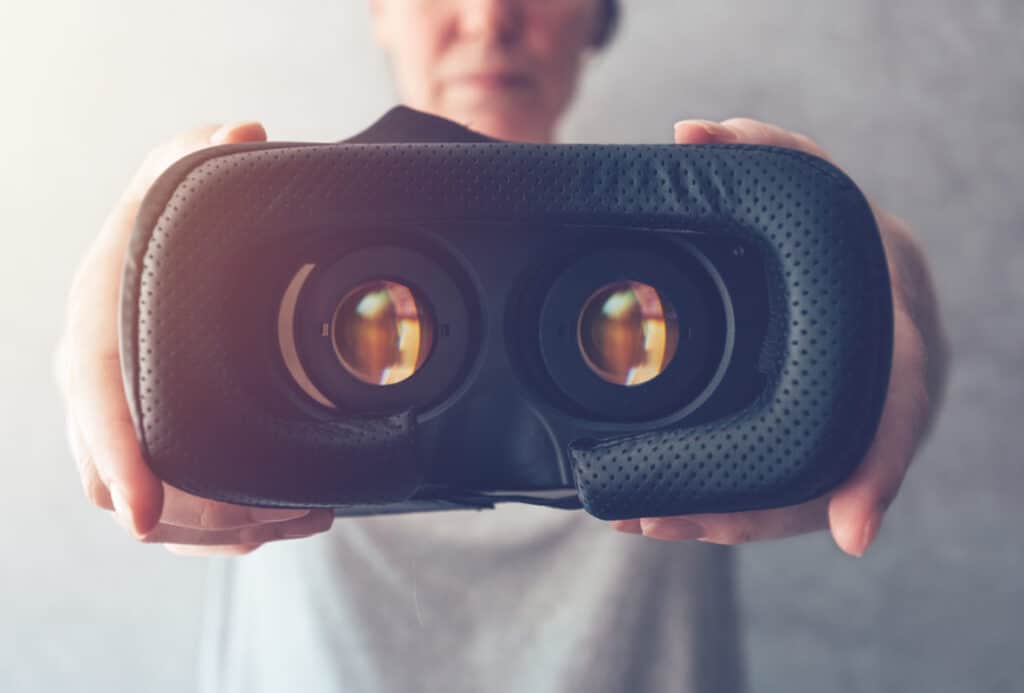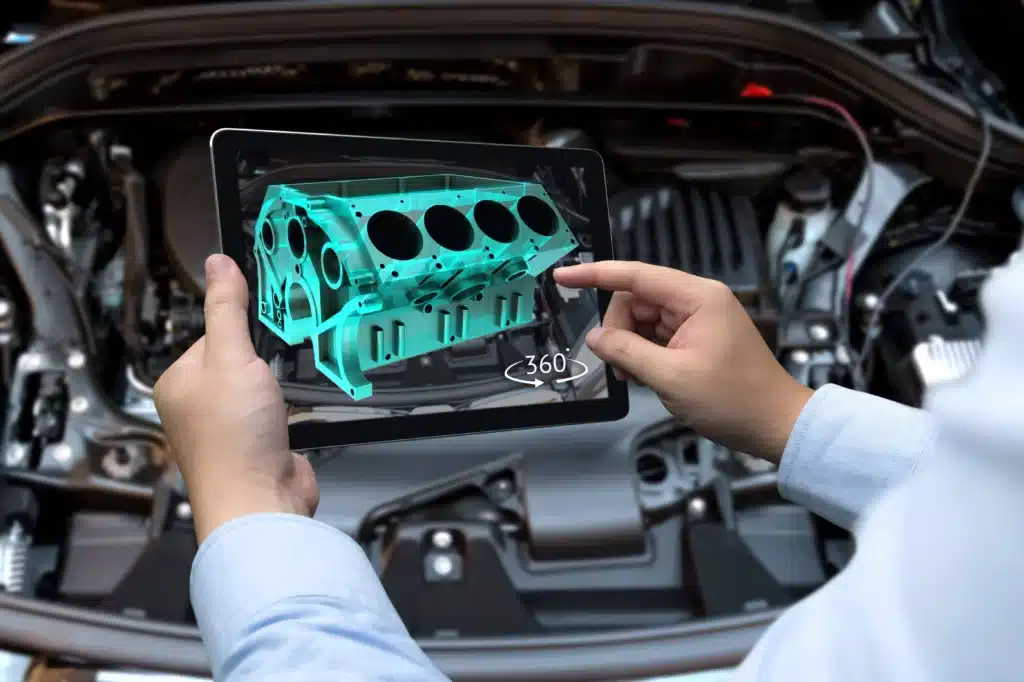Augmented reality (AR) has emerged as a revolutionary force transforming the way we interact with the digital and physical world. This in-depth analysis will explore augmented reality, focusing on the specialized experience it offers, the personalized strategies it drives, and how it contributes to saving time and resources. Throughout this exploration, relevant keywords will be highlighted to understand the complexity and potential of augmented reality.
Specialized Augmented Reality Experience
Augmented reality provides a unique experience by overlaying digital elements on the real world. From entertainment applications to industrial solutions, the specialized augmented reality experience is characterized by immersion and interactivity. Users can view and manipulate digital information in their environment, creating personalized and captivating experiences.
Customized Augmented Reality Development Strategies
Augmented reality application development requires customized strategies to ensure effective integration in different contexts. Strategies vary by purpose, from geo-tagging in navigation applications to information overlay in education.
In retail, strategies such as 3D product visualization allow consumers to virtually experience products before making a purchase. Tailoring the strategy to the specific needs of the project is essential to achieve optimal results.
Saving Time and Resources with Augmented Reality
Augmented reality, by providing contextual information and real-time visualization, contributes significantly to saving time and resources in various industries. In medicine, for example, AR is used for surgical planning, allowing practitioners to accurately visualize the patient’s anatomy before performing complex procedures.
Furthermore, in design and engineering, visualizing 3D models using augmented reality reduces the need for costly physical prototypes and speeds up the design process. This ability to improve efficiency and reduce costs makes augmented reality a valuable tool in a variety of industries.
Augmented Reality Applications in Various Industries
Augmented reality has found applications in a variety of sectors, from entertainment to education to industry. In education, AR is used to create immersive learning experiences, while in the tourism industry, AR applications provide real-time information about historical sites.
In healthcare, real-time data visualization during surgeries improves accuracy and decision making. In retail, AR is used to enhance the shopping experience in physical stores, allowing customers to obtain additional information about products by simply viewing them through their mobile devices.
Challenges in Augmented Reality Development
Despite its many benefits, augmented reality development faces unique challenges. Accurate object tracking and seamless integration with the physical environment are critical. In addition, the need for specialized hardware, such as augmented reality glasses, poses barriers to adoption in some cases.
Security and privacy are also significant concerns, as AR often involves real-time data processing and interaction with the surrounding environment. Addressing these challenges is essential to ensure widespread acceptance and effectiveness of augmented reality applications.
Augmented Reality and Emerging Technologies
Augmented reality is intertwined with other emerging technologies, such as artificial intelligence and the internet of things. The combination of these technologies further drives AR’s ability to deliver more personalized and contextual experiences.
In the gaming industry, the combination of augmented reality and artificial intelligence enables more immersive and adaptive gaming experiences. In the industrial arena, AR integrates with IoT sensors to provide real-time feedback on machine performance and production processes.
Augmented World Immersion: Beyond the Conventional Screen
Augmented reality goes beyond being a simple technology; it is a gateway to experiences that defy the norm. From entertainment applications that bring storytelling to life to industrial solutions that transform data visualization, we will explore how immersion redefines human interaction with digital information.
Customized Strategies in Augmented Reality Development
The development of augmented reality applications requires customized strategies to ensure effective integration in different contexts. Strategies vary by purpose, from geo-tagging in navigation applications to information overlay in education.
Disruptive Strategies in Augmented Reality Development
In the field of AR application development, innovation and adaptability are rife. We will discuss how disruptive strategies are driving revolutionary projects, from creating virtual worlds in games to using AR in medicine to transform the way we diagnose and treat disease.
Efficiency Redefined: The Contribution of Augmented Reality
AR not only promises amazing experiences, but also redefines the efficiency at the heart of various operations. From accelerating design processes in engineering to improving decision making in healthcare, we will explore how AR translates into time and resource savings, driving productivity to unprecedented levels.
Unraveling the Fabric of Augmented Reality: Key Words in Focus
User Experience (UX): The fundamental aspect that defines how users interact with AR applications.
Technology Innovation: The engine that drives the constant development of new AR functionalities and applications.
Augmented Interface Design: The way in which digital information is presented and merged with the real environment.
Revolutionary Applications: Projects that go beyond conventional boundaries and transform industries.
Process Acceleration: AR’s ability to streamline and optimize operations in various disciplines.
Medical Transformation: The role of AR in revolutionizing diagnostics, surgery and disease treatment.
Sustainable Development: How AR can contribute to more sustainable practices by reducing waste and resources.
Venturing into the Landscape of Augmented Reality
As we venture into this fascinating technological landscape, we will unravel the complexities that define augmented reality. From ethical challenges to opportunities for interdisciplinary collaboration, each step will bring us closer to understanding how this technology is shaping the future of digital interaction.
Join us on this journey of discovery as we explore how augmented reality not only enhances the way we interact with information, but also catalyzes a revolution in multiple sectors. Focusing on keywords that delineate this experience, we will reveal the nuances of AR and its impact on the very fabric of our reality. Get ready to dive into the convergence of the digital and the physical, where augmented reality opens the doors to a future that only a few years ago seemed unattainable!
Relevant Keywords in the World of Augmented Reality
Geo-tagging: Incorporation of digital information in specific physical locations.
3D Visualization: Three-dimensional representation of objects or data.
Surgical planning: Use of AR to visualize and plan medical procedures.
Immersive experiences: Interactions that immerse users in digital environments.
Object tracking: Accurate monitoring of the position and orientation of objects in space.
Privacy in AR: Security and data protection considerations in augmented reality applications.
Augmented Reality Glasses: Specialized devices to experience augmented reality in a more immersive way.
The Future of Augmented Reality.
The future of augmented reality looks exciting, with continued advances in hardware and software. The development of more affordable and lightweight augmented reality glasses promises to bring AR to a wider audience. In addition, improved accuracy and integration with other technologies will open up new possibilities in fields such as medicine, education and entertainment.
Tips for Augmented Reality Developers
Understand the Context of Use: Understanding how users will interact with augmented reality in their environment is crucial to effective design.
Prioritize Accuracy: Accuracy in object tracking and placement of digital elements is essential for a compelling experience.
Focus on Security and Privacy: Given the interactive nature of AR, ensuring data security and privacy is a priority.
Experiment with Development Strategies: Given that augmented reality is an evolving field, being willing to experiment with new strategies and technologies is key.
Optimize for Different Devices: Consider the diversity of devices, from cell phones to augmented reality glasses, and optimize applications accordingly.
Test in Different Lighting Scenarios:
Relevant Keywords in the World of Augmented Reality.
Geo-tagging: Embedding digital information at specific physical locations.
3D Visualization: Three-dimensional representation of objects or data.
Surgical planning: Use of AR to visualize and plan medical procedures.
Immersive experiences: Interactions that immerse users in digital environments.
Object tracking: Accurate monitoring of the position and orientation of objects in space.
Privacy in AR: Security and data protection considerations in augmented reality applications.
Augmented Reality Glasses: Specialized devices to experience augmented reality in a more immersive way.
Optimize for Different Devices: Consider the diversity of devices, from cell phones to augmented reality glasses, and optimize applications accordingly.
Test in Diverse Lighting Scenarios:
Lighting can significantly affect the perception of augmented reality. Test in different lighting conditions to ensure that the experience is consistent and effective.
Consider Ergonomics in Augmented Reality Devices:
If you are developing for augmented reality devices, consider comfort and ergonomics. Users should be able to interact naturally and easily without causing fatigue or discomfort.
Optimize for Low Latency:
Low latency is essential for a smooth augmented reality experience. Optimize your app to minimize any noticeable delay between user interactions and in-app responses.
Take Advantage of Pattern Recognition Features:
Augmented reality often involves pattern or marker recognition. Learn how to leverage these features to improve the accuracy and consistency of digital overlays in the real world.
Encourage Interactivity:
Interactivity is key in augmented reality. Design experiences that invite users to actively participate, whether through gestures, touches or physical movements.
Regular Content Updates:
Keep content fresh and up to date. Regular updates can keep users engaged and add new features or enhancements based on user feedback.
Facilitate Navigation and Orientation:
Incorporate navigation and orientation elements to guide users in augmented reality environments. This is especially important in applications that involve outdoor exploration or large spaces.
Collaborate with Design and User Experience Specialists:
Work closely with designers and user experience experts to ensure that the augmented reality user interface is intuitive and engaging.
Beta Test with Real Users:
Before releasing your app to the general public, beta test with real users. Their feedback and hands-on experiences can reveal issues that might have been overlooked during development.
Performance Monitoring and Analysis:
Implement monitoring and analysis tools to track your application’s performance in real time. This will allow you to identify potential problems and make quick adjustments.
Explore Integrations with External Technologies:
Consider integrating your augmented reality application with other technologies, such as location services, cloud databases, or data analytics systems to extend its functionality and utility.
Share Knowledge and Learn from the Community:
Augmented reality is a constantly evolving field. Participate in online communities, attend conferences and share your knowledge. Collaborating with other professionals can inspire you and offer new perspectives.
Accessibility Awareness:
Consider accessibility in the design of your augmented reality app. Make sure it is usable for people with visual, hearing or other limitations.
Legality and Compliance:
Research and understand the laws and regulations related to augmented reality in your area. Make sure you comply with legal and ethical requirements to avoid future problems.
Itera Constantly:
Augmented reality is a rapidly evolving field. Don’t be afraid to iterate your application. User feedback and new technologies may require continuous adjustments to maintain relevance and effectiveness.
By following these additional tips, you’ll be better equipped to meet the challenges and make the most of the opportunities in the fascinating world of augmented reality. Success on your development journey!
Conclusions: The Continuing Evolution of Augmented Reality.
In conclusion, augmented reality stands as a bridge between the digital and physical worlds, offering specialized experiences, personalized strategies and resource efficiency. From medical applications to educational tools to retail shopping experiences, augmented reality is transforming multiple sectors. Keywords such as 3D visualization, security and immersive experiences outline the narrative of an ever-expanding and evolving field. With the continued integration of emerging technologies and focus on personalization, augmented reality continues to challenge the boundaries of what is possible at the intersection of the physical and digital.
Augmented reality, with its ability to merge the digital and physical worlds, has proven to be a transformative technology with applications ranging from entertainment to healthcare to education. In this journey of exploration, we looked at the specialized expertise it offers, the personalized strategies it drives and how it contributes to saving time and resources.
The specialized augmented reality experience lies in its ability to immerse users in interactive digital environments, offering experiences that go beyond the conventional screen. Customized strategies in the development of augmented reality applications are essential to adapt to various contexts, whether in education, medicine, retail or industry.
Time and resource savings are manifested through the efficiency that augmented reality brings to processes such as surgical planning, product visualization or training in industrial environments. This efficiency not only improves outcomes, but can also reduce costs and accelerate time to market.
Keywords such as geo-tagging, 3D visualization, security and immersive experiences summarize the crucial elements of augmented reality that have been explored. These keywords reflect not only the technical features, but also the ethical and security aspects that need to be considered in the development and implementation of augmented reality applications.
In the future, augmented reality promises to evolve further with advances in hardware, integration with emerging technologies, and increased accessibility. Collaboration between developers, designers and user experience experts will play a vital role in creating more effective and engaging augmented reality experiences.
In short, augmented reality is not only redefining how we interact with digital information, but it is also opening up new possibilities in a variety of fields. Its ability to provide immersive and personalized experiences is driving innovation and offering practical, real-world solutions. With a continued focus on improving accuracy, security and accessibility, augmented reality is on its way to further transforming the way we perceive and engage with the world around us.Let reality





